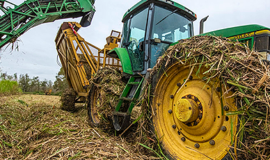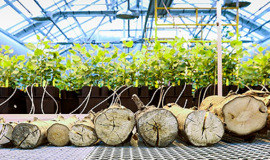Biomass Energy: An Underestimated Renewable Resource
While the limelight often falls on the more talked-about sources of renewable energy like solar and wind power, it’s important to not overlook the potential of one of the oldest and yet often underestimated sources – biomass energy. Biomass has been a part of our lives long before the concept of renewable energy was even recognized. Today, we explore this renewable resource in depth and shed some light on its significant potential.
Biomass, at its most basic, refers to living or once-living material, including agricultural crops, wood waste, municipal solid waste, and animal waste, that can be used as fuel. Biomass energy is produced when these organic materials are burned (direct combustion), converted into gas or fuels (thermal conversion), or broken down by bacteria (biochemical conversion) to generate heat, electricity, or biofuels.
The beauty of biomass lies in its sustainability and the potential for a carbon-neutral energy cycle. When biomass is used as fuel, it releases carbon dioxide. However, this CO2 is absorbed by the next generation of plants grown as biomass, making the process potentially carbon-neutral. It’s a natural cycle that has been in place since the dawn of time, which we are now learning to harness more effectively.
One of the major advantages of biomass is its versatility. Biomass can be converted into various forms of energy, including heat, electricity, and biofuels like biodiesel and ethanol. These biofuels have the potential to significantly reduce our reliance on fossil fuels for transportation, which is one of the largest sources of greenhouse gas emissions worldwide.
Another key benefit of biomass energy is that it capitalizes on waste materials that would otherwise be discarded, such as crop residues, wood waste, and even municipal waste. Rather than filling up landfills, these resources can be used to generate renewable energy.
Of course, like any other energy source, biomass energy does come with its challenges. These include logistical issues related to collecting and transporting biomass materials, the need for more advanced technologies to increase energy extraction efficiency, and ensuring that biomass collection and use do not negatively impact local ecosystems. But with continued research and investment, these obstacles can be mitigated.
The role of biomass energy may not be as widely recognized as that of solar or wind, but its potential is immense. As we continue our quest for sustainable energy sources, it’s vital that we utilize all the tools at our disposal – and biomass is a tool with much to offer. This ancient energy source is now part of our future, and its journey is only just beginning.
With each step towards green and renewable energy technologies, we are paving the way towards a more sustainable and environmentally friendly future. And biomass energy, an often-underestimated player in this field, stands as a testament to our ability to find innovative and sustainable energy solutions in places we might not initially expect.





